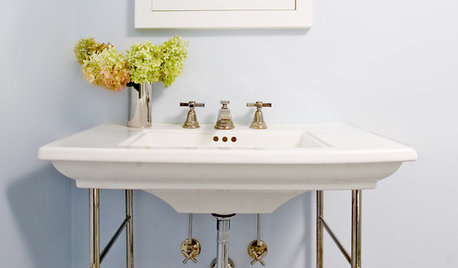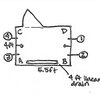Stateline Water Heater Problem after plumber fix
nhb22
12 years ago
Related Stories

GREAT HOME PROJECTSHow to Switch to a Tankless Water Heater
New project for a new year: Swap your conventional heater for an energy-saving model — and don’t be fooled by misinformation
Full Story
WORKING WITH PROSHow to Work With a Plumber
Follow these guidelines, and your plumbing job will flow as smoothly as water through clean pipes
Full Story
GREAT HOME PROJECTSHow to Add a Solar Water Heater
Lower energy bills without a major renovation by putting the sun to work heating your home’s water
Full Story
HOUSEKEEPINGHow to Fix a Stinky Garbage Disposal
No plumber’s fee or even a trip to the hardware store is required with these easy solutions
Full Story
DISASTER PREP & RECOVERYRemodeling After Water Damage: Tips From a Homeowner Who Did It
Learn the crucial steps and coping mechanisms that can help when flooding strikes your home
Full Story
LIFEYou Showed Us: 20 Nutty Home Fixes
We made the call for your Band-Aid solutions around the house, and you delivered. Here's how you are making what's broken work again
Full Story
HOUSEKEEPINGWhat's That Sound? 9 Home Noises and How to Fix Them
Bumps and thumps might be driving you crazy, but they also might mean big trouble. We give you the lowdown and which pro to call for help
Full Story
REMODELING GUIDESThe Hidden Problems in Old Houses
Before snatching up an old home, get to know what you’re in for by understanding the potential horrors that lurk below the surface
Full Story
HOUSEKEEPING10 Problems Your House May Be Trying to Show You
Ignore some of these signs and you may end up with major issues. We tell you which are normal and which are cause for concern
Full Story
LIFEHouzz Call: Show Us Your Nutty Home Fixes
If you've masterminded a solution — silly or ingenious — to a home issue, we want to know
Full StoryMore Discussions








User
bus_driver
Related Professionals
Harmony Plumbers · Shamong Kitchen & Bathroom Remodelers · Forest Hill Kitchen & Bathroom Remodelers · Alpine Kitchen & Bathroom Remodelers · Biloxi Kitchen & Bathroom Remodelers · Clovis Kitchen & Bathroom Remodelers · Dearborn Kitchen & Bathroom Remodelers · Mooresville Kitchen & Bathroom Remodelers · Olney Kitchen & Bathroom Remodelers · Schiller Park Kitchen & Bathroom Remodelers · Sioux Falls Kitchen & Bathroom Remodelers · South Plainfield Kitchen & Bathroom Remodelers · Terrell Kitchen & Bathroom Remodelers · Waukegan Kitchen & Bathroom Remodelers · Weymouth Kitchen & Bathroom Remodelersnhb22Original Author
User
lazypup
nhb22Original Author
Jack_Mason
User